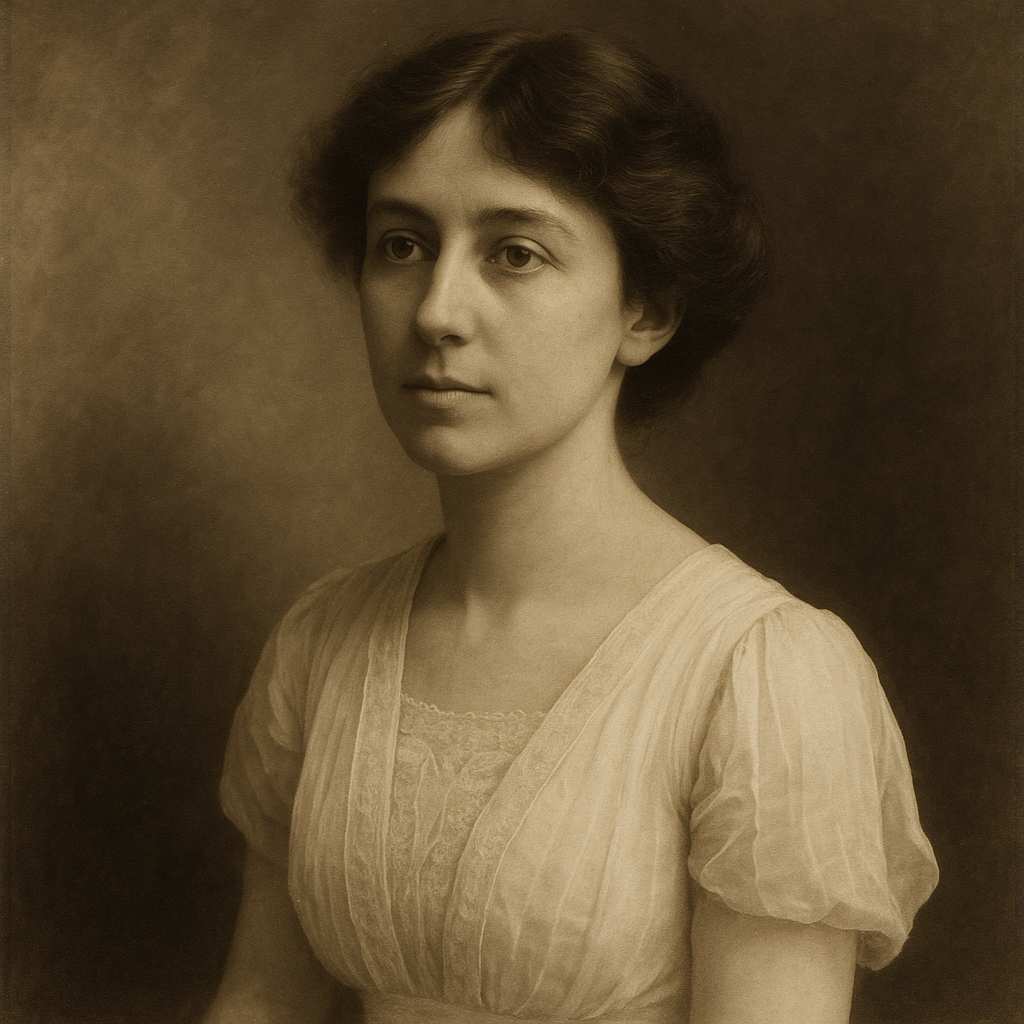Alone
Sara Teasdale
1884 to 1933

I am alone, in spite of love,
In spite of all I take and give—
In spite of all your tenderness,
Sometimes I am not glad to live.
I am alone, as though I stood
On the highest peak of the tired gray world,
About me only swirling snow,
Above me, endless space unfurled;
With earth hidden and heaven hidden,
And only my own spirit's pride
To keep me from the peace of those
Who are not lonely, having died.
Sara Teasdale's Alone
Introduction
Sara Teasdale’s Alone is a striking meditation on isolation and existential loneliness, exploring the emotional complexities of human existence even in the presence of love. Written in a lyrical and intimate style, this poem is a profound expression of a speaker who feels irreparably detached from both the world and others, despite engaging in love and relationships. The depth of feeling expressed by Teasdale resonates with broader themes of alienation, existential angst, and the struggle between life and death. The poem also reflects Teasdale’s own tendencies toward melancholia, a characteristic that pervades much of her work. In Alone, the tension between the yearning for connection and the inevitability of solitude is central to its poetic fabric, and this essay will explore these themes in relation to the poem’s structure, imagery, tone, and broader philosophical implications.
The Paradox of Solitude in Love
The opening lines of Alone present a paradox that lies at the heart of the poem’s exploration of loneliness:
“I am alone, in spite of love,
In spite of all I take and give—
In spite of all your tenderness,
Sometimes I am not glad to live.”
Here, Teasdale immediately confronts the reader with a contradiction: the speaker’s loneliness persists "in spite of love." Traditionally, love is associated with connection, intimacy, and fulfilment; it is considered the antidote to isolation. However, the speaker’s experience is more complex, as love has not alleviated her feelings of loneliness. The use of the phrase “in spite of” suggests that love, though present, fails to penetrate the existential solitude that defines her existence.
Teasdale’s choice of the verb "take and give" also underscores the transactional nature of relationships. Love, in this sense, is depicted as an exchange of emotional or physical gestures, but this exchange, no matter how tender or genuine, does not resolve the speaker’s deeper sense of alienation. The repetition of “in spite of” further heightens this tension, emphasizing the dissonance between the external acts of love and the internal emotional reality of the speaker.
The final line of this stanza—“Sometimes I am not glad to live”—offers a raw glimpse into the speaker’s inner despair. This admission of not being “glad to live” complicates the notion that love, or human connection more broadly, has the power to redeem a life from meaninglessness or suffering. Instead, it suggests that the speaker's malaise runs much deeper, hinting at existential dissatisfaction. The line is not a declaration of a desire to die, but rather an expression of weariness and a lack of joy in the mere act of living. It speaks to the profound estrangement the speaker feels from both herself and the world around her.
Imagery of Isolation: The Frozen Landscape
The second stanza of Alone builds on this theme of isolation, utilizing vivid imagery to convey the speaker’s sense of estrangement from the world:
“I am alone, as though I stood
On the highest peak of the tired gray world,
About me only swirling snow,
Above me, endless space unfurled.”
Here, the poem shifts from the emotional realm of loneliness into the physical landscape of isolation. The speaker imagines herself standing "on the highest peak of the tired gray world," an image that evokes both a sense of physical elevation and emotional detachment. This metaphorical peak isolates her from the rest of humanity, positioning her above the "tired gray world" below. The use of the word "tired" in this context is significant; it suggests a world that is not only worn out but also drained of colour and vitality, reinforcing the speaker’s sense of exhaustion and disillusionment with life.
The swirling snow around her creates an image of disorientation and chaos, a natural environment that mirrors the internal confusion and isolation she feels. Snow, often associated with coldness and death, symbolizes the emotional numbness that accompanies her solitude. In this frozen world, there is no warmth, no life, and no connection to others, only the stark, cold reality of her loneliness.
The description of "endless space unfurled" above the speaker adds a cosmic dimension to her isolation. This "endless space" suggests the infinite expanse of the universe, reinforcing the insignificance of the individual within the grander scope of existence. It is a powerful metaphor for existential isolation, as the speaker is not only cut off from other people but also from any meaningful connection to the universe itself. The sense of vast, indifferent space heightens the speaker's feelings of being adrift in a world that offers no solace or answers.
Death and the Desire for Peace
In the final stanza, Teasdale takes the speaker’s meditation on loneliness to its ultimate conclusion—an exploration of death as a possible refuge from her solitude:
“With earth hidden and heaven hidden,
And only my own spirit's pride
To keep me from the peace of those
Who are not lonely, having died.”
The first line, "With earth hidden and heaven hidden," emphasizes the speaker’s sense of disconnection from both the physical and spiritual realms. The hidden earth suggests her detachment from the tangible world and the relationships that might exist within it. Meanwhile, the hidden heaven points to a loss of spiritual or religious faith that might have offered her solace. In this existential void, where neither the earthly nor the divine is visible or accessible, the speaker is left utterly alone.
The phrase "my own spirit’s pride" is particularly telling. Here, pride functions as both the speaker's source of strength and her burden. It is her pride that keeps her alive, resisting the pull of death, but it also reinforces her isolation. The speaker’s pride may be interpreted as her unwillingness to surrender to despair fully, or it may reflect a stoic determination to endure life’s suffering. However, it also implies a kind of self-imposed barrier to connection; her pride may prevent her from fully opening up to others or accepting the vulnerability that love requires.
The notion of death as "the peace of those who are not lonely" introduces a chilling but poignant idea: that death may offer the release from loneliness that life cannot. For the speaker, the dead are no longer lonely because they have transcended the human condition with all its emotional complexities and existential struggles. Death, in this context, represents not merely an end but a form of peace, a cessation of the torment of isolation. However, the speaker does not directly express a desire for death, but rather reflects on the peace it could bring, thus reinforcing the ambivalence she feels toward life itself.
Thematic Resonances: Existentialism and Romanticism
Teasdale’s Alone bears significant thematic resonances with both existentialist and Romantic thought, particularly in its treatment of solitude and the search for meaning. The poem shares existentialism’s preoccupation with individual isolation and the meaninglessness of existence. The speaker’s inability to find solace in love or life echoes the existentialist notion that human existence is characterized by a fundamental aloneness. The vast, indifferent universe described in the second stanza reinforces the idea that the cosmos offers no inherent meaning or purpose, leaving the individual to confront their own solitude.
At the same time, the poem’s imagery of nature and the sublime—the "highest peak," the "swirling snow," the "endless space"—aligns with Romantic traditions. Romanticism often emphasized the individual’s emotional and spiritual experience of the natural world, especially in moments of awe and isolation. However, where Romantic poets like Wordsworth or Shelley might find transcendence or connection in such sublime landscapes, Teasdale’s speaker remains profoundly alienated. Nature, rather than offering consolation or unity, becomes another reflection of her inner loneliness and existential disorientation.
Structure and Form
Teasdale’s use of structure and form in Alone reinforces the poem’s thematic content. Composed of three quatrains, the poem adheres to a regular ABAB rhyme scheme. This formal consistency contrasts with the emotional turbulence expressed in the poem, creating a subtle tension between order and chaos. The rhyme scheme itself can be seen as a kind of emotional containment, holding in the speaker’s feelings of despair and loneliness within a rigid structure, much like the speaker herself is constrained by her pride.
The poem’s meter, primarily iambic tetrameter, also contributes to this tension. The rhythm is steady and controlled, but there are subtle variations that disrupt the regularity of the verse, much like the speaker’s internal turmoil disrupts the external order of her life. For example, the slight inversion in the line "Sometimes I am not glad to live" draws attention to the speaker’s weariness, disrupting the otherwise smooth flow of the poem. These small metrical shifts mirror the speaker’s emotional instability, suggesting that beneath the surface of formal order lies a world of chaos and isolation.
Conclusion
In Alone, Sara Teasdale offers a profound meditation on the nature of human solitude, love, and existential despair. Through her masterful use of imagery, structure, and tone, Teasdale captures the painful paradox of feeling isolated even in the presence of love, as well as the deeper existential loneliness that plagues the speaker’s life. The poem grapples with the limitations of love and human connection in the face of an indifferent universe, suggesting that solitude is an inescapable aspect of the human condition. At the same time, the poem reflects Teasdale’s own melancholic sensibilities, presenting loneliness not as a transient feeling but as an intrinsic part of existence. In the end, Alone speaks to the universal human experience of isolation, while also inviting readers to reflect on their own relationships with love, life, and death.
This text was generated by AI and is for reference only. Learn more
Want to join the discussion? Reopen or create a unique username to comment. No personal details required!



Comments
"I love how beautifully this light music captured the essence of the poem. I adore how Sara Teasdale, in such simple and direct words, captures strong and complex emotions. Her poems on love and longing are marvelous. I'd like you to set as many poems as possible from her "Love Songs" collection to music. One poem that I'd particularly like to see set to music is "Erinna" from her collection "Helen of Troy and Other Poems"."